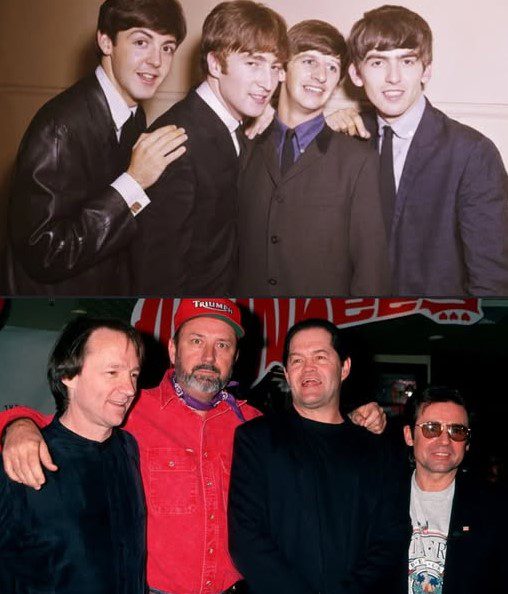
The Origins of The Monkees and the Birth of a Television Phenomenon
In the vibrant landscape of 1960s pop culture, few bands emerged with as much immediate attention as The Monkees. Formed explicitly for a television series aimed at capturing the youth market, the band’s inception diverged sharply from traditional music groups who organically evolved from shared musical ambitions. The producers, Bob Rafelson and Bert Schneider, orchestrated a meticulous casting process to select four talented young men—Davy Jones, Micky Dolenz, Michael Nesmith, and Peter Tork—whose charisma and screen presence would resonate with audiences. Their television debut in 1966 was nothing short of a cultural event, blending scripted humor with musical performance. This unusual genesis, however, would become the root of widespread critical scrutiny, branding the group as “manufactured” in the eyes of skeptics.
Early Criticism: Accusations of Inauthenticity
From the outset, music critics were skeptical of The Monkees’ artistic legitimacy. Unlike traditional rock bands, who wrote, composed, and performed their own music, The Monkees were initially heavily guided by professional songwriters and studio musicians. Esteemed critics of the era, including publications like Rolling Stone, publicly questioned whether the band members possessed genuine musical talent or if they were merely actors fulfilling a scripted fantasy for television audiences. The use of session musicians on their first albums, while common practice in the industry, fueled perceptions that the group was more a commercial product than an authentic rock band. Critics argued that this assembly-line approach undermined the creative integrity typically associated with musical groups of the 1960s, particularly at a time when authenticity was becoming a hallmark of pop and rock music.
Breaking Through: Commercial Success Despite Skepticism
Despite the relentless critiques, The Monkees’ commercial performance was extraordinary. Their debut single, “Last Train to Clarksville,” skyrocketed to the top of the Billboard charts, proving that public adoration often outweighed critical opinion. The band’s self-titled debut album achieved multi-platinum status, signaling that mass appeal could exist independently of critical validation. Their television show amplified this popularity, providing a platform that few contemporary bands could access. The visual appeal of the series, combined with catchy, expertly crafted songs from top songwriters such as Tommy Boyce and Bobby Hart, created a synergy that translated into record-breaking sales and widespread recognition.
The Struggle for Musical Autonomy
By the late 1960s, members of The Monkees began asserting their desire for creative control over their music, a struggle that would eventually transform public perception. Michael Nesmith, in particular, championed the movement toward authenticity, pushing for the band to write and perform their own material. This transition was not immediate, and it required negotiations with producers who initially resisted relinquishing control. Over time, the group succeeded in recording tracks where they played their own instruments and contributed original compositions, effectively countering the narrative of being a manufactured band. This shift showcased their versatility and proved that, beneath the initial image-driven concept, real musicianship was present.
Cultural Impact and Lasting Legacy
The controversy surrounding The Monkees’ manufactured image did little to diminish their cultural impact. Their television program pioneered the integration of music and visual storytelling, influencing the development of music videos decades later. The combination of humor, accessible storytelling, and catchy melodies made the band relatable to millions of fans worldwide. Moreover, the commercial success of their early records highlighted a significant phenomenon in the entertainment industry: mass media could shape musical trends and dictate popular taste, challenging the traditional gatekeepers of music criticism.
Redefining the Narrative: From Manufactured to Legitimate Artists
As The Monkees evolved, so did critical opinion. Albums such as Headquarters (1967) marked a turning point, with the band performing most of the instrumentation themselves and contributing original songs. Critics began to acknowledge that the Monkees were not merely a product of television marketing but a genuinely talented musical group capable of artistic innovation. The transformation underscored a broader truth in the music industry: the line between commercial product and authentic artistry is often blurred, and initial perceptions can be reshaped through perseverance and demonstrated talent.
Lessons from The Monkees’ Experience
The journey of The Monkees offers invaluable insights into the dynamics of pop culture, media influence, and critical reception. Their story demonstrates that initial criticism, no matter how intense, can coexist with enduring popularity and artistic growth. By navigating skepticism, asserting creative control, and evolving their musical identity, The Monkees not only silenced detractors but also cemented a legacy that continues to inspire musicians and entertainers. Their experience exemplifies the tension between industry fabrication and authentic artistry, and the ultimate triumph of talent, determination, and public resonance.
Conclusion: The Monkees’ Enduring Relevance
Today, The Monkees are remembered not for the controversy of their early days but for the lasting contributions they made to popular music and media innovation. The initial label of “manufactured band” has been largely recontextualized as a footnote in the narrative of a group that defied expectations and grew into legitimate artists. Their story remains a testament to the power of perseverance, the evolving nature of artistic credibility, and the enduring appeal of music that resonates with audiences across generations. In revisiting their early challenges, we gain a comprehensive understanding of how perception, talent, and innovation intertwine to shape musical history, solidifying The Monkees as a pivotal influence in both music and entertainment culture.